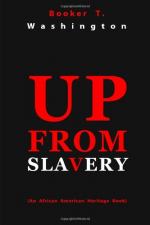Not a few times, when a new student has been led into the temptation of marring the looks of some building by leadpencil marks or by the cuts of a jack-knife, I have heard an old student remind him: “Don’t do that. That is our building. I helped put it up.”
In the early days of the school I think my most trying experience was in the matter of brickmaking. As soon as we got the farm work reasonably well started, we directed our next efforts toward the industry of making bricks. We needed these for use in connection with the erection of our own buildings; but there was also another reason for establishing this industry. There was no brickyard in the town, and in addition to our own needs there was a demand for bricks in the general market.
I had always sympathized with the “Children of Israel,” in their task of “making bricks without straw,” but ours was the task of making bricks with no money and no experience.
In the first place, the work was hard and dirty, and it was difficult to get the students to help. When it came to brickmaking, their distaste for manual labour in connection with book education became especially manifest. It was not a pleasant task for one to stand in the mud-pit for hours, with the mud up to his knees. More than one man became disgusted and left the school.
We tried several locations before we opened up a pit that furnished brick clay. I had always supposed that brickmaking was very simple, but I soon found out by bitter experience that it required special skill and knowledge, particularly in the burning of the bricks. After a good deal of effort we moulded about twenty-five thousand bricks, and put them into a kiln to be burned. This kiln turned out to be a failure, because it was not properly constructed or properly burned. We began at once, however, on a second kiln. This, for some reason, also proved a failure. The failure of this kiln made it still more difficult to get the students to take part in the work. Several of the teachers, however, who had been trained in the industries at Hampton, volunteered their services, and in some way we succeeded in getting a third kiln ready for burning. The burning of a kiln required about a week. Toward the latter part of the week, when it seemed as if we were going to have a good many thousand bricks in a few hours, in the middle of the night the kiln fell. For the third time we had failed.
The failure of this last kiln left me without a single dollar with which to make another experiment. Most of the teachers advised the abandoning of the effort to make bricks. In the midst of my troubles I thought of a watch which had come into my possession years before. I took the watch to the city of Montgomery, which was not far distant, and placed it in a pawn-shop. I secured cash upon it to the amount of fifteen dollars, with which to renew the brickmaking experiment. I returned to Tuskegee, and, with the help of the fifteen dollars, rallied our rather demoralized and discouraged forces and began a fourth attempt to make bricks. This time, I am glad to say, we were successful. Before I got hold of any money, the time-limit on my watch had expired, and I have never seen it since; but I have never regretted the loss of it.




